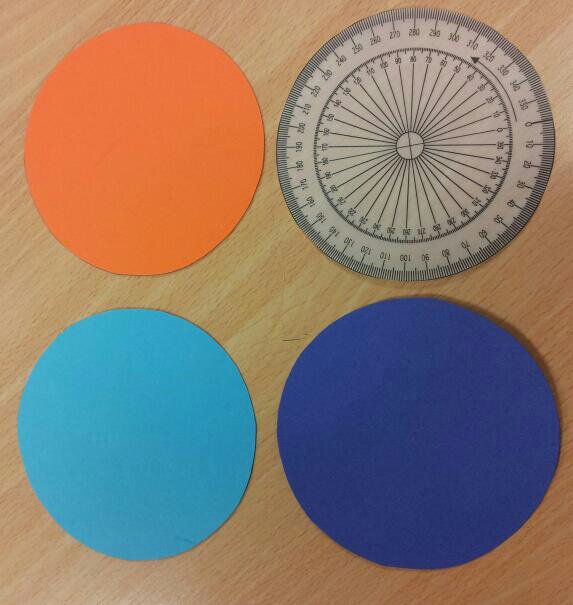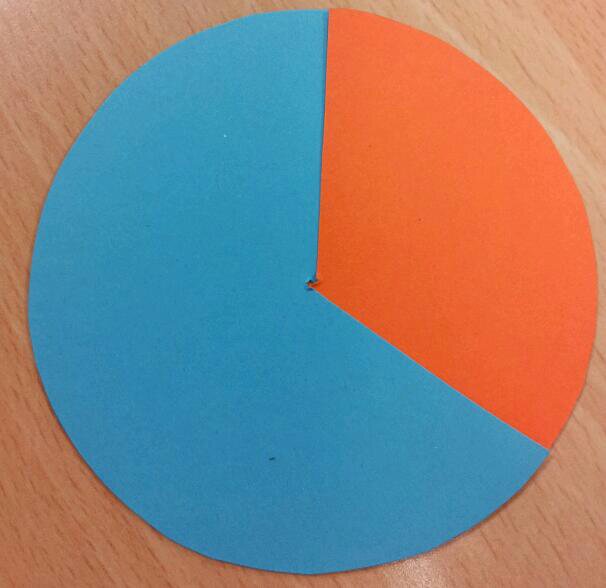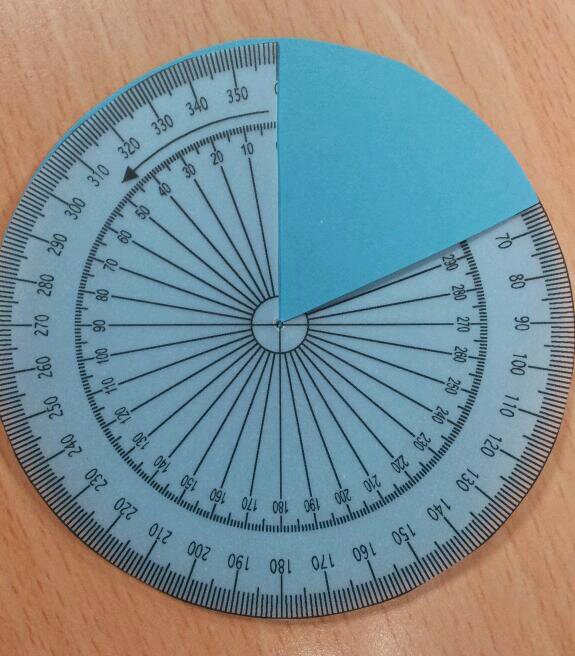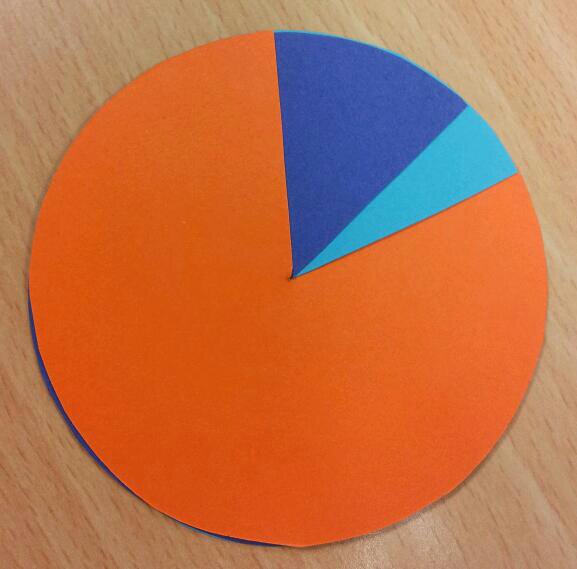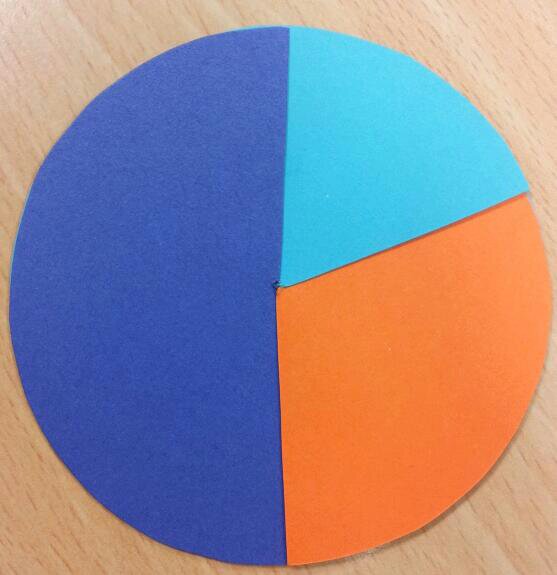Here is a quick, multi-function resource for you: a set of overlapping circles for angles, pie-charts and fractions/percentages.
Equipment
Card
Scissors
Pencil
Straight edge or ruler
Pair of compasses
A 360 degree protractor printed on paper (or a tracing paper protractor cut out)
Construction
1. Cut out three identical circles and the paper protractor.
2. Stack them on top of each other and put the pointy end of the compasses (or a drawing pin) through the middle. Wiggle it around to make a bigger hole – please don’t stab yourself.
3. Draw a radius on the circles.
4. Cut down each radius on the circles and the 0 degree line on the protractor.
5. All done!
Activity 1: Angle Estimation
Slot two circles together:
Estimate the orange angle.
What could the blue angle be?
Show me an acute angle.
Show me a blue 170 degree angle.
Activity 2: Reading a protractor scale
Slot the protractor into a circle:
How big is the blue angle?
Show me an 80 degree angle.
Activity 3: Pie-charts
Slot the three circles together:
What could this pie-chart represent?
Show me a pie chart with two equal sections
Activity 4: Fractions and percentages
Use three circles again:
Estimate what percentage is purple.
What fraction could the blue section represent?

